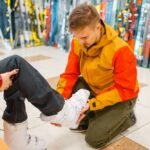Backpacking is, in our judgment, among the best activities out there. It’s an easy way to get outside, walk about and have some fun, and, most of all, it can be achieved by almost anybody who enjoys nature!
You could be miles away from your home at any given time and out of mobile range, which makes taking care of yourself a high priority.
And what’re you going to carry on your backpacking trips and make sure that you are not caught with your pants down? Like men’s hiking footwear, here are only a few basics, to begin with:
Basics
It sounds trivial because it’s always important to keep things intact while you’re packing your first aid bag. Little travel-sized ibuprofen tubes and packets have a funny way to slip to the very bottom of your pack, where you can’t find them until you pull everything out.
You will pick up anything in travel sizes, so to have on hand is very cool. And if you’ve had a run-in with the bugs, it’s nice to have the stuff at hand. Cuts and scrapes are among the most common threats to the trail.
When you’ve got the space, you probably can put it. Moleskin helps to keep the hot surfaces from transforming into blisters, and as it forms, it will ease some of the friction on a blister.
Handy Tools
Never say when these might be helpful! These are just a must-have to all-around. If necessary, they are suitable for opening food packages and are essential for cutting gauze. Often have a pair up somewhere in your bag.
This is a more critical resource for backpacking. Not only are tweezers useful for splinter removal, but they’re also handy when you can’t get a knot untied from time to time. Best of everyone, they’re lightweight so that they won’t add a lot of weight to your bag.
So, having them on hand is always pleasant. Another tool that captures anything, the safety pins, will do just about everything. You should carry at least 5 in your first aid bag for backpacking including footwear like women s hiking boots.
Emergency Equipment
Also, if anything happens to your lighter or fire starter, you do not want to be on the trail without a spark. These protection matches can potentially be useful as long as you keep them in your first aid kit clean and dry.
When someone falls in injury, or you stick in some bad weather, these blankets are a great saver for life. They will save someone from hypothermia, and they double the transparent ones as a guide to your position.
It is also critical that you have a means of signaling support in case you get lost. If it is a mirror or a whistle is up to you, but in your first aid kit holds at least one, if not both.
Note they don’t have to be heavy; after all, you’re trying to save weight and energy. So, it’s only one of those small hybrid mirror/whistle devices that will get the job done. Finally, without the duct tape, you cannot go backpacking.















